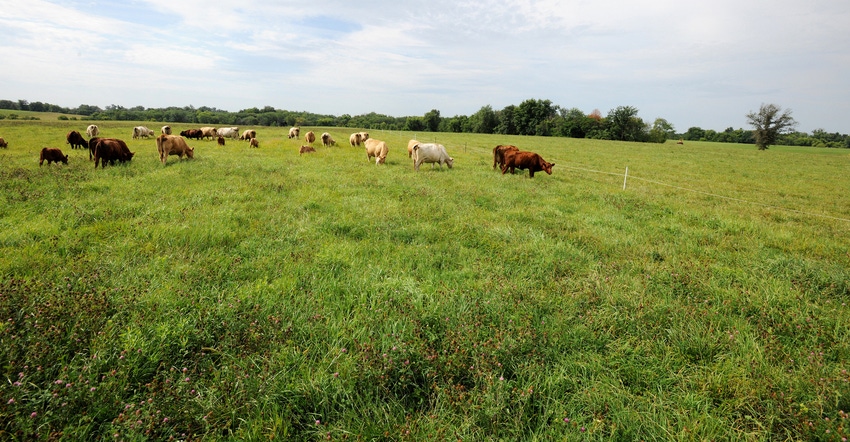February 8, 2019

By Jason Johnson
Iowa farmers contracted a record $9.2 million with USDA in 2018 for conservation practices that help reduce soil erosion, improve water quality and result in better forage conditions for grass-based grazing.
More than 650 Environmental Quality Incentives Program contracts were obligated to Iowa farmers in fiscal year 2018, exceeding the three previous years combined. A sampling of the most popular adopted practices includes watering facilities, livestock water pipeline, ponds, fence, brush management and stream crossings.
Jon Hubbert, assistant state conservationist for programs with USDA’s Natural Resources Conservation Service in Iowa, says more than half of last year’s EQIP grazing conservation contracts were signed by producers in emergency drought counties in southeast Iowa.
“We offered increased payment rates for eligible grazing practices in the drought area,” Hubbert says. “Farmer interest for these practices during the drought far exceeded our expectations, which was great to see. Using these practices will provide natural resource protection and improve their grazing operations for a long time.”
Make best use of land and forage
Many of the adopted practices allow livestock easier access to drinking water and exclude cattle from directly polluting streams and ponds. Practices like prescribed grazing, fence and brush management also help producers make the best use of their land and forage.
Local NRCS offices accept EQIP applications on a continuous basis but will periodically set sign-up deadlines as funding allows. The next EQIP application deadline is March 15 for Iowa farmers.
Jeff Matthias, grassland specialist for NRCS in Iowa, strongly encourages farmers to work with their local NRCS office to develop a grazing management plan — a working document of planned improvements to the grazing resource base.
“Grazing management plans help farmers manage soil, water, air, plant and animal resources, along with helping to design a system that will provide the proper nutrition for grazing animals, so they have high performance at the lowest cost,” he says.
Pasture improvement pays off
Just like cropland, Matthias says grazing operations can benefit from managing pastures with soil health in mind. “As soil health improves, forage production increases and the need for fertilizer application decreases, reducing input costs and increasing profits,” he adds.
NRCS offers a lengthy list of practices that treat resource concerns and improve pasture soil health, and are eligible for financial assistance through EQIP. Pasture management conservation practices, such as prescribed grazing, forage and biomass planting, and controlling livestock access offer producers a higher payment rate in Iowa compared to many other conservation practices.
Call or visit your local NRCS office for more details about pasture management. Or visit the USDA Natural Resources Conservation Service web page for Iowa range and pasture.
Johnson is public affairs specialist for NRCS in Iowa.
Source: NRCS, which is responsible for the information provided and is wholly owned by the source. Informa Business Media and its subsidiaries aren’t responsible for any of the content contained in this information asset.
You May Also Like




